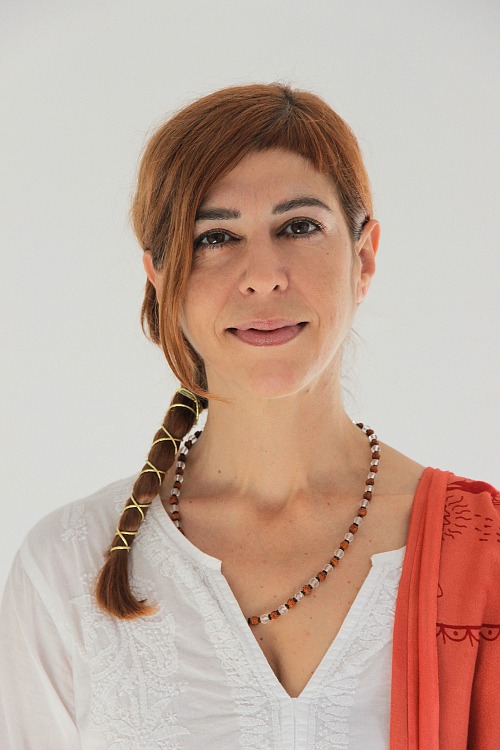
Madhuri Dasi graduated in 2006 as Yoga Acharya or Yoga teacher by the International Federation of Classical Yoga. However, her interest in continuing to advance in her field of study, the asana, makes her a perpetual student in this branch of Yoga. Her concern leads her to study all aspects of the practice of asana in different traditions, specializing in the anatomy of the posture. Under the guidance of Reyes González Gómez, she graduates as an instructor of Therapeutic Yoga at the European Institute of Yoga. Currently and for more than ten years, she has been teaching Yoga Sivananda, Sivananda Karana Yoga, yoga adapted for the elderly or with physical problems, and Nidra Yoga. She has received diksha (spiritual initiation) in the tradition of Swami Sivananda and Upanayanam or brahminical initiation. She is secretary and founding member of the KrishnaKali Yoga Ashram Religious Association, for the dissemination and promotion of Hinduism in Spain.
Activity
- Friday 7th, from 11am to 12: 55h, in the Sala Turia.
Sivananda Karana Yoga: Sivananda Karana Yoga is a style of practice based on Sivananda Yoga, maintaining its structure and with the same emphasis on abdominal and continuous breathing, but in sequences of postures or karanas, linked with vinyasas, also putting a great focus on postural alignment. This style provides an active and dynamic Yoga practice, which in addition to stretching the muscles, strengthens and tones to a great extent. It is ideal for those who are struggling with the static state of the asana or have problems concentrating, because its dynamism and fluidity makes the class energetic and fun. - Saturday 8th, from 20: 50h to 22h, in the Sala Marina.
Nidra Yoga: It’s a powerful technique in which one learns to relax consciously, achieving a state of dynamic sleep that induces a complete relaxation, both physical and mental and emotional. In the Nidra Yoga, the student’s consciousness is guided by different parts of his/her body in order to achieve a deeper state of concentration. In this intermediate state between sleep and wakefulness, contact with conscious and unconscious dimensions occurs spontaneously. It can be considered a method of deep self-inquiry in the different levels of consciousness, develops memory, increases knowledge and creativity, promotes personal and spiritual development. - Sunday 9th, from 8:00 a.m. to 8:55 p.m., in the Sala Turia.
Yoga for Anahata Chakra: The Chakras are 7 energy centers that are in the body along the spinal column. Anahata is the 4th Chakra and is located in the center of the chest (cardiac plexus) and is related to the ability to love and receive love, with compassion, the joy of living and acceptance of oneself. In the Yoga class for Anahata, the 4th Chakra will be physically worked through chest opening asanas and mobilization of the dorsal area. It will also work energetically through the attention that will be placed in the area of the chakra during the postures, since the energy is directed where the consciousness is focused. Finally there will be a meditation on the Chakra with its color (green) and its mantra (yam). By balancing Anahata you will get emotional benefits such as the ability to love and forgive others and yourself, empathy and compassion, and courage to face your fears. The physical benefits are related to the heart, the lungs, the blood circulation and the immune system. - Saturday 8th, from 5:05 p.m. to 6:35 p.m., in the Sala Marina.
Therapeutic Yoga for lumbar and cervical: In this theoretical-practical yoga class you will learn to understand the mechanisms of the body’s reaction to the most common injuries and how to therapeutically adapt the most usual yoga postures for people with lumbar or cervical injuries (herniated discs, bone or joint wear, low back pain or neck pain). Knowing the origin of the injury and the body’s reaction to it, you can avoid aggravating your condition, reduce pain and get a yoga class adapted to the person, facilitating their recovery. Whether you are a yoga teacher or a practitioner, the anatomical knowledge of the body will help you understand the muscular and joint work that is done in the yoga posture and adapt it to your needs or those of your students.